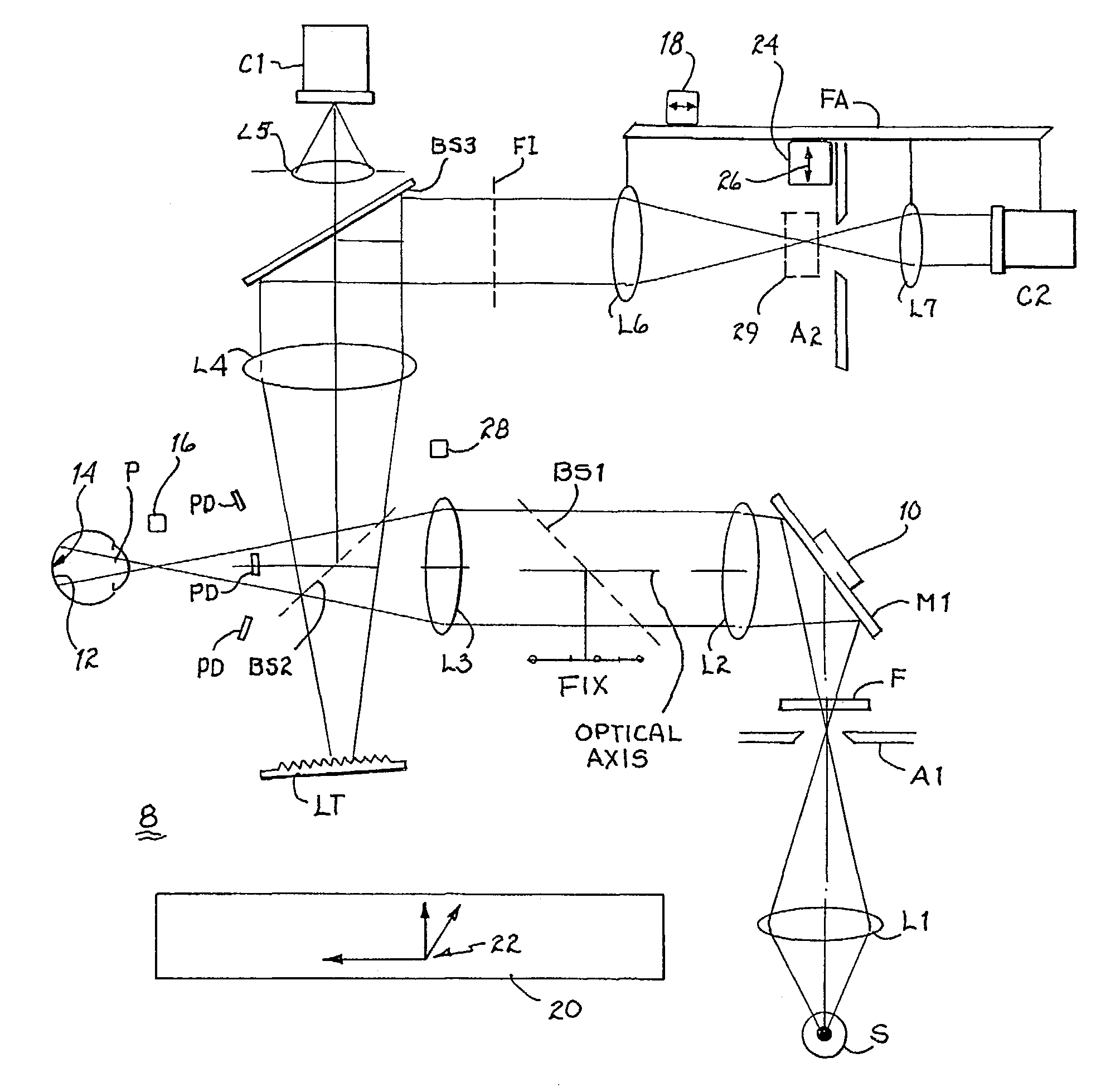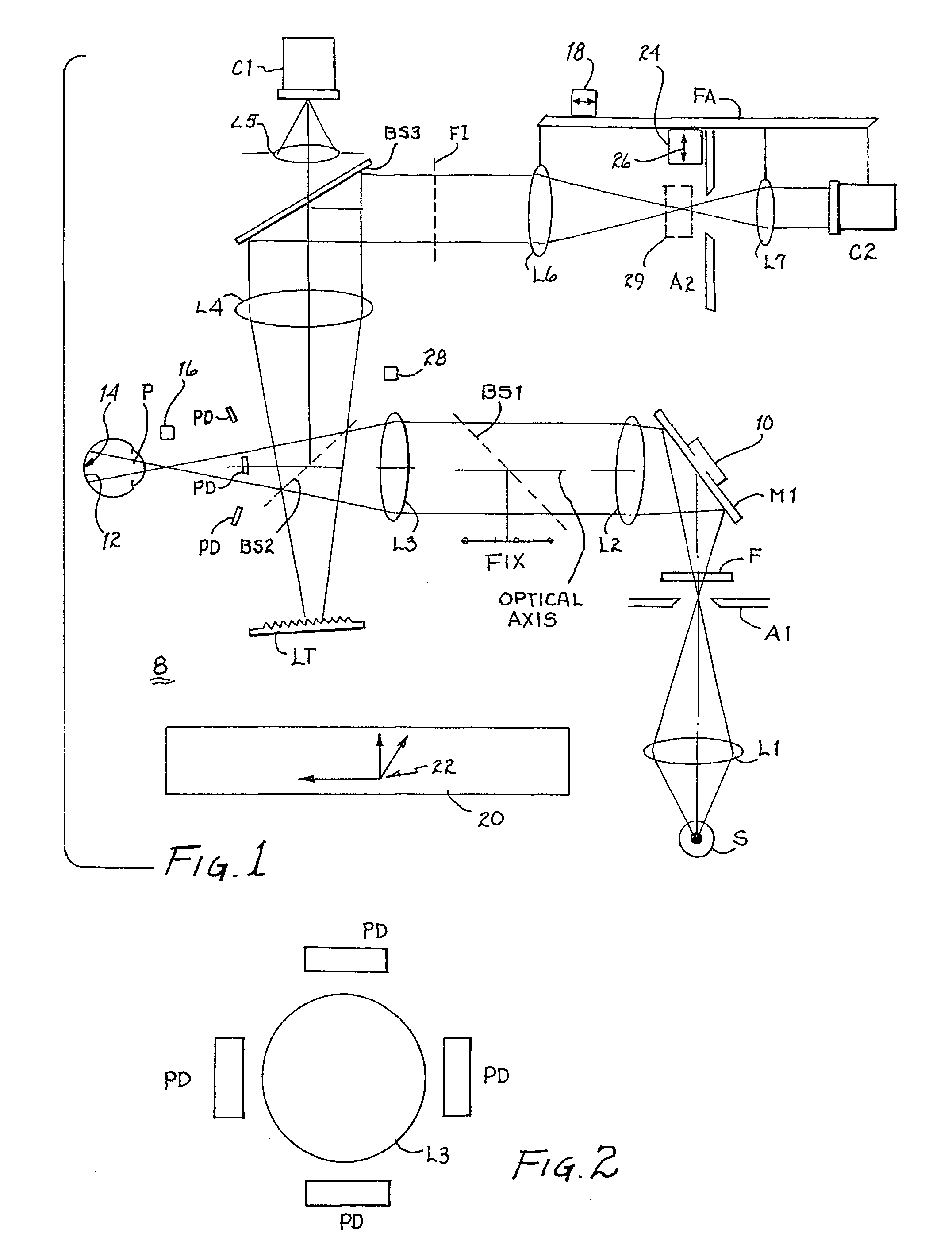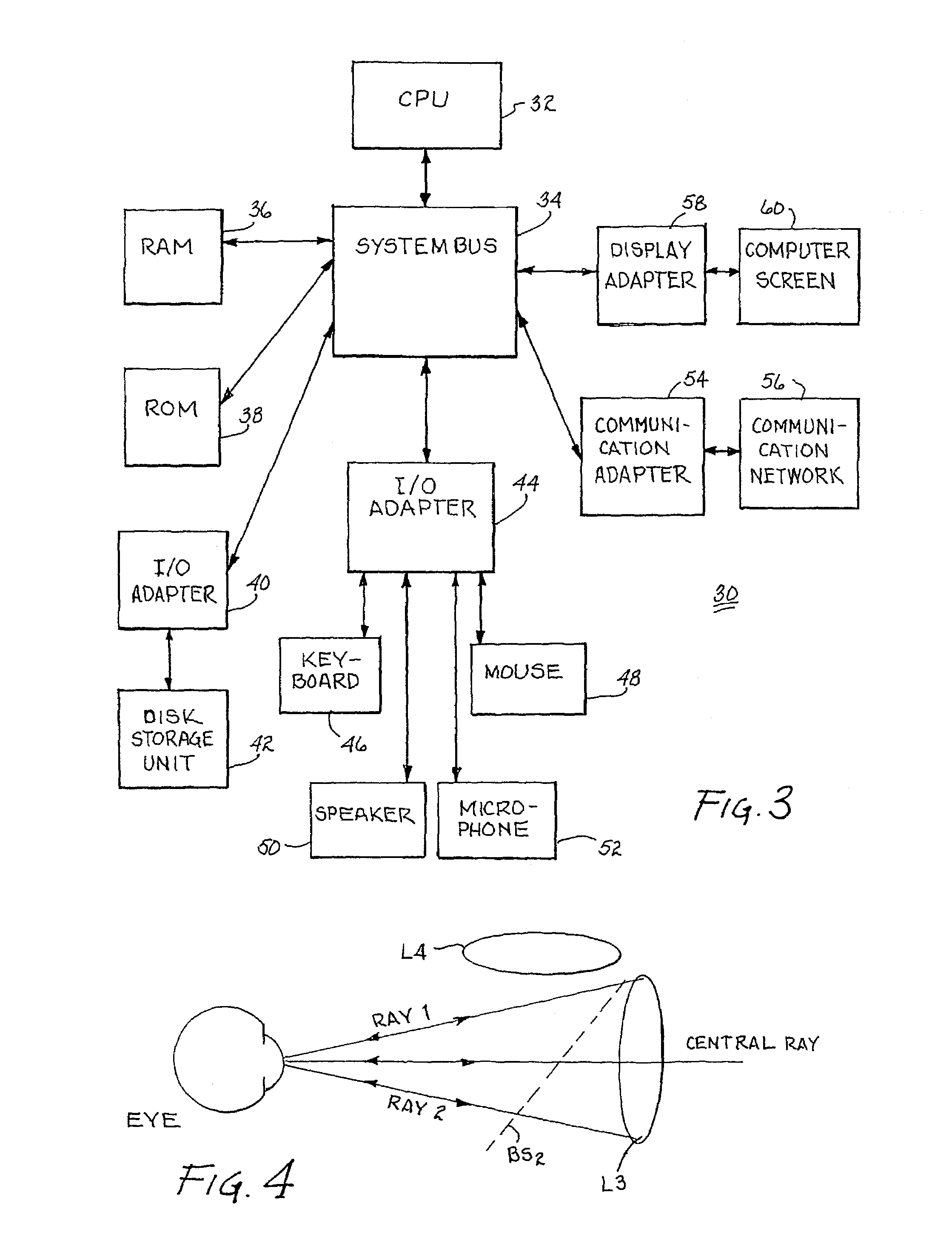Ocular fundus auto imager
a technology of ocular fundus and auto imager, which is applied in the field of ocular imaging, can solve the problems of pupils constricting to a size too small to obtain good images, and achieving the effects of enhancing the visibility of certain fundus features, reducing the difficulty of using existing fundus cameras, and reducing the cost of us
- Summary
- Abstract
- Description
- Claims
- Application Information
AI Technical Summary
Benefits of technology
Problems solved by technology
Method used
Image
Examples
Embodiment Construction
[0041]Referring to FIG. 1, there is illustrated a preferred embodiment of optical system 8 of the present invention. Lens L1 focuses light from a light source S onto a small aperture A1. The light source may be a source of visible light, infrared radiation or of a wavelength in the near visible infrared region. Light passing through aperture A1 passes through a filter F and is reflected by mirror M1 toward lens L2. Mirror M1 is pivotally mounted to permit rotation about two orthogonal axes, which pivotal mounting is represented by device 10 attached to the mirror. Lens L2 collimates (makes parallel) light from aperture A1. A beam splitter BS1 transmits about ninety percent (90%) of the incident light from lens L2 to lens L3. Half of the light passing through lens L3 is reflected by beam splitter BS2 and is absorbed by light trap LT. The other half of the light passing through lens L3 forms an image of aperture A1 in the focal plane of lens L3, which focal plane lies in the plane of ...
PUM
 Login to View More
Login to View More Abstract
Description
Claims
Application Information
 Login to View More
Login to View More - R&D
- Intellectual Property
- Life Sciences
- Materials
- Tech Scout
- Unparalleled Data Quality
- Higher Quality Content
- 60% Fewer Hallucinations
Browse by: Latest US Patents, China's latest patents, Technical Efficacy Thesaurus, Application Domain, Technology Topic, Popular Technical Reports.
© 2025 PatSnap. All rights reserved.Legal|Privacy policy|Modern Slavery Act Transparency Statement|Sitemap|About US| Contact US: help@patsnap.com



